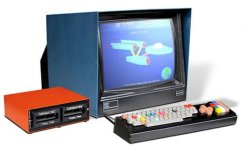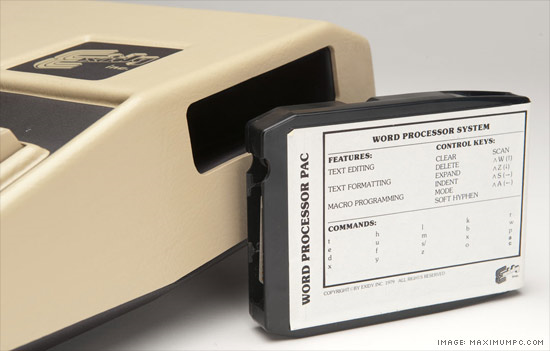The Exetron Stringy Floppy and Sinclair Microdrive would disagree. Continuous loop tape formats were used successfully for data storage. Not being able to rewind doesn't matter since the tape will pass the beginning in a few seconds and resume trying to find files.
Here's a picture of the aforementioned Compucolor and a dual "Floppy Tape" 8-track drive:

These drives essentially worked like the Stringy Floppy and friends just, well, 8-track. They used extra-short tapes so each track would loop around in only couple minutes or so at high speed; at 4800 baud with 8 tracks you need only a few minutes worth of track to hold about a total of 1MB of storage.
(The system specified that it could do 1MB of storage per tape, so here's the rough math on that: 1MB is a bit north of 8 million bits and we have 8 tracks, so we need to hold 128K, or a million bits per track. At 4800 baud storing a million bits takes a little over three and a half minutes of tape. Maybe we should pad that out to five minutes to allow for formatting and file system markers.)
Therefore assuming the system was smart enough to use some kind of directory system at the start of the tape loops (8-tracks use a conductive marker to signal audio players to switch to the next track, in a digital system that would be your index mark) it shouldn't take more than a few minutes to locate and load a piece of information anywhere on the tape even if the "scanning" speed is just a small multiple of the normal play speed. "A few minutes" isn't great but at least it's automatic compared to a plain linear cassette deck.
Not that such a system was ever likely to work well in practice. 8-track was designed to be rugged and forgiving in applications like car music players, what it didn't offer was precision or high-fidelity. Unless you used special high-strength tape, which I guess could be an option with such a short loop, I doubt you could up the scanning speed much over over 2X, and track alignment/bleed-through was probably also a problem. No surprise these didn't catch on since floppy drives already existed and weren't *that* much more expensive in the grand scheme of things. (Making something like a "floppy tape" actually reliable would probably result in a tape mechanism at least as expensive.)
Let's not forget that non-continuous loop versions of automatic tape drives based on audio decks also existed:

And likewise were pretty much a terrible idea in retrospect.



